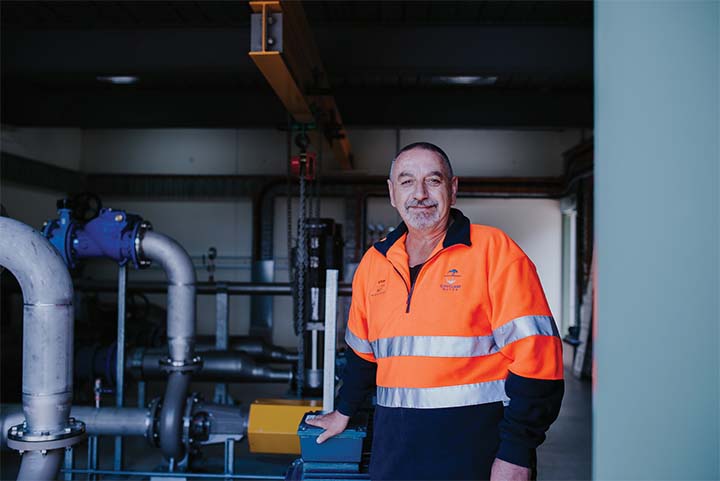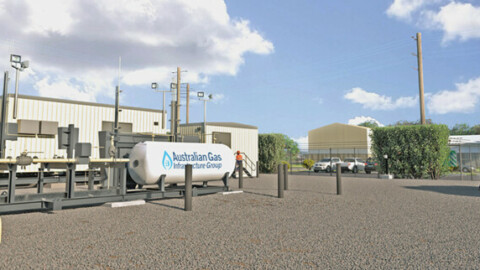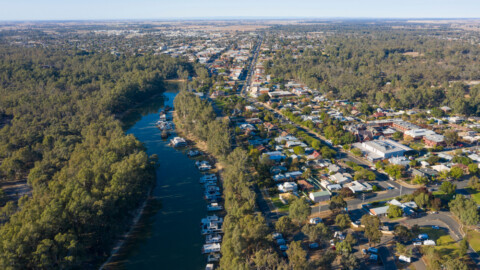The completion of the $15 million Moe-Warragul Interconnect is a significant water infrastructure milestone for Victoria’s Gippsland region, connecting the central and western Gippsland water basins to increase water security for the rapidly growing region and make the network more resilient to climate change. Made up of pipelines and pump stations, the Interconnect enables water to be transported in either direction between Moe and Warragul and links the Latrobe and Tarago systems. Pump Industry spoke to Gippsland Water to find out more about the project and the infrastructure that was constructed.

Darnum Treated Water Pump Station.
Completed in two stages over ten years, the major project involved the construction of a 6.3km pipeline between Yarragon and Darnum; an 8.3km pipeline between Darnum and Warragul; new booster pumps at Darnum; and a new pump station at Trafalgar West.
Stage one works were completed in 2013 and involved the construction of a new 6.3km DN375 water main from Yarragon to Darnum, as well as a one megalitre tank, pump station and disinfection site at Darnum.
Stage two started and was completed in 2019. This stage involved:
• Construction of inlet works pit and pipework at the Warragul South Basin
• Construction of pump station building at Sunny Creek Road, Trafalgar
• Construction of new 8.3km DN375 water main from Darnum to the Warragul water system
• Further pump station works at Sunny Creek Rd, Trafalgar and at Darnum pump station
• Dosing upgrade works to three disinfection sites
• Installation of swabbing stations and cleaning of the mains from Moe to Warragul
• Installation of pressure reduction valve due to the 400 kilopascal higher pressure imposed by the Warragul system

Procuring and testing the equipment
Gippsland Water’s General Manager Assets, Nic Moss, said the system was designed to be able to transfer between 6.5 and 9.5 megalitres of water per day between the Tarago and Latrobe systems.
With the pumping equipment selected needing to be able handle the required flows and variable speed drives used to vary the flow as required. “Two Grundfos pumps with 7.5kW motor and Danfoss variable speed drives, were installed at Darnum pump station,” Mr Moss said.
“Later, two Hydro-Titan back pull-out pumps with 90kW motor and Danfoss variable speed drives were also installed at the Darnum pump station. “Over at Trafalgar pump station, two Hydro-Titan back pull-out pumps with 75kW motor and Danfoss variable speed drives were installed.
“All pipework within the pump station buildings was stainless steel with welded and flanged joints. All external buried pipework was ductile iron, polyvinyl chloride (PVC) or polyethylene (PE),” Mr Moss said.
The contracts were in the form of AS 4000 – 1997 General Conditions of Contract, which was a lump sum contract for the supply of all plant, labour and materials.
“We conducted a standard testing program that began with factory acceptance testing, which evaluates the equipment during and after the assembly. We later performed wet and dry site acceptance testing, and performance testing.”
“There were 14 people involved in the commissioning and logistics planning, plus additional field team members undertaking testing, monitoring and flushing.”
The project aligns with the Victorian Government’s goals to further develop the water grid across Victoria – to improve security of supply and meet the challenges of population growth and climate change – and was delivered as part of its Water for Victoria plan.
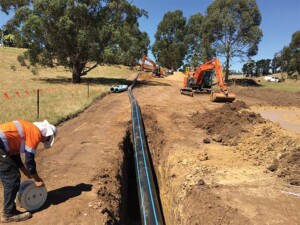
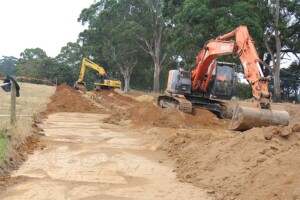
Construction of the 8.3km section of the pipeline between Darnum and Warragul.


